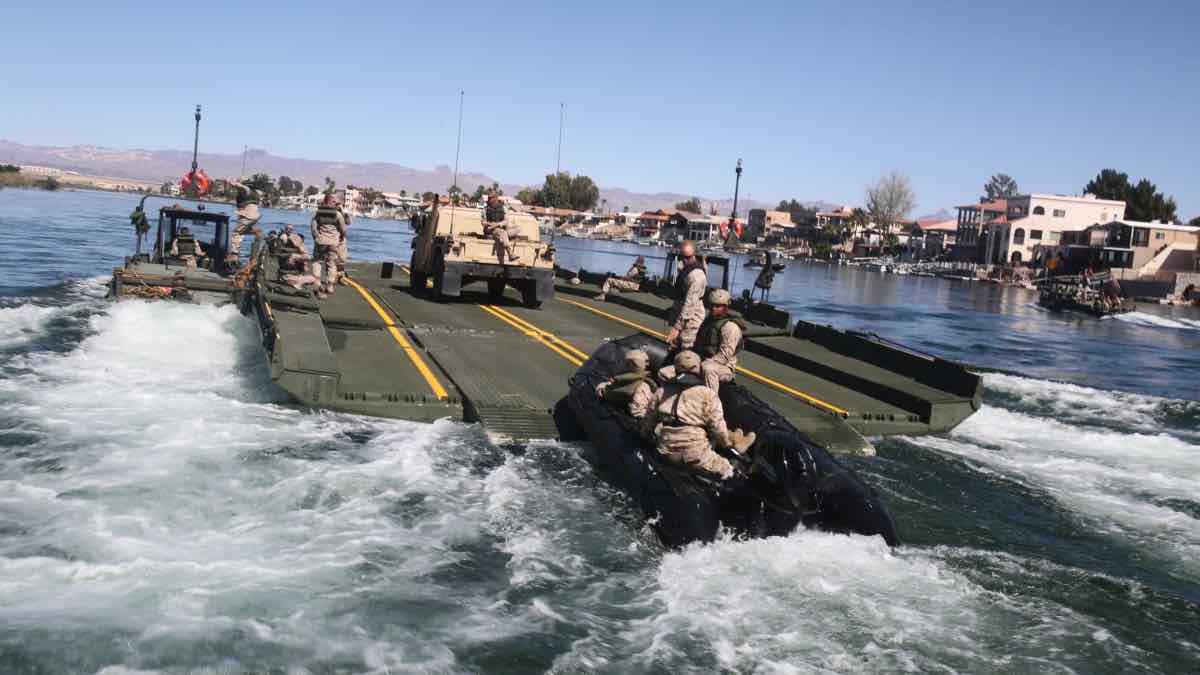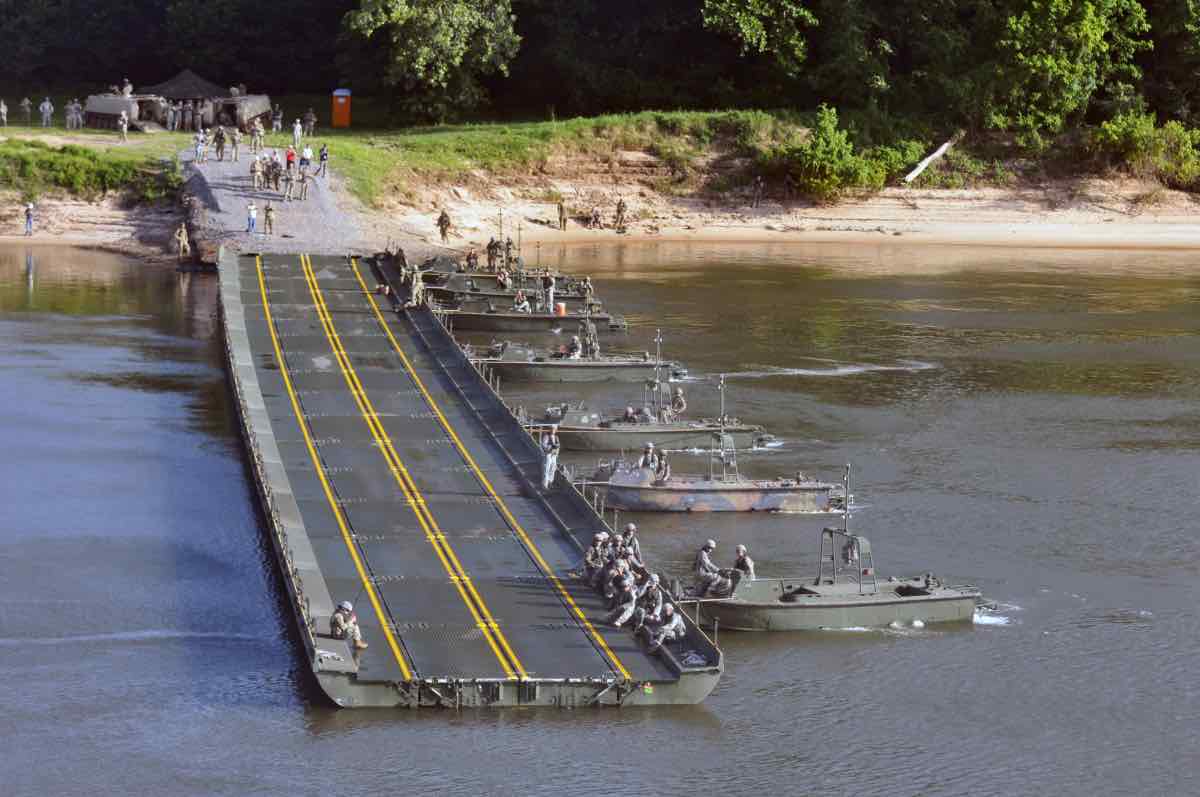The Improved Ribbon Bridge: How It Works
In Sun Tzu’s Art of War, Sun wisely recommends to never attack an army at a river until at least half of their men are across. His logic is that it’s far easier to overwhelm half of an army ashore than to fight an entire army at once. It’s also nearly impossible for that army’s beleaguered half to get reinforcements and supplies. Sun Tzu would be mortified if he saw the U.S. Army deploy its new Improved Ribbon Bridge (IRB) across that river.
Ever since bodies of water separated land masses, armies have struggled with the best way to bring across men, supplies, and equipment. It’s one of the reasons why generals put so much effort in defending or attacking bridges. However, the Improved Ribbon Bridge offers a solution. Using individual bridge segments, the Improved Ribbon Bridge doesn’t try to cross the river all at once. Rather, it uses individual segments to create a custom length of bridge which takes across tanks, trucks, and armored vehicles.
Improved Ribbon Bridge Capabilities
Once set up, the new bridge is literally a two-way single-lane highway that supports nearly any full-size military campaign. It means the warfighter no longer worries over whether or not a bridge further up or down the river is available. They can build one over the course of hours. This beats the old way of doing it – ferrying essential troops and equipment by boat.
There’s still plenty of obstacles to overcome. First, a landing party has to hit the other side of the river bank and secure it. Armored vehicles provide suppressive fire until the landing party arrives. Once to the other side, they pop smoke once it is secured.

Boats are deployed into the water with individual teams assigned to link up segments of the bridge. Bridge segments are then deployed off the back of a truck. Once the bridge segment hits the water, it expands out. Boats drive up to the segments then men get out and tie off the bridge pieces to the boat until they can be linked with other segments.
The bridge is built in two main parts and then linked in the middle. Once connected, ropes connect the bridge segments initially until the bridge pieces are mechanically linked. The Multi-Role Bridge Company (MRBC) is usually responsible for this job.
Each bridge can reach up to 210 meters in length when completely deployed. The MRBC acts on their own or is supported by combat arms if the area is hotly contested. In general, the MRBC only moves once an area is relatively stable.

Improved Ribbon Bridge vs. Standard Ribbon Bridge
At present, this system replaces an older system. The Army’s Standard Ribbon Bridge system deploys a single bridge length on a retractable system. Additionally, the IRB is interoperable with other European nations’ floating bridge systems – so NATO allies can support each other in building bridges together.
If there’s a really strong current, the bridge system won’t work. This takes large, heavy-flowing rivers out of the question. The IRB was designed to operate in a body of water with less than 3 meters per second of flow – relatively placid waters as far as rivers go.
Commanders send out engineer teams to assess where an ideal spot to cross the river is. Additionally, they determine if river speeds will allow it. This presents a bit of a challenge for commanders. Commanders adjust up or down stream depending on the time of year, how long the bridge will be needed, and the condition of the waters at a certain point. Still, this is a far more accommodating situation than in previous eras. Previously, generals diverted a lot of time, men, and resources to ensuring that existing infrastructure remain secure. For the landing teams and assembly teams of the MRBC, though, it’s just part of the job.
See Improved Ribbon Bridge Specifications
| Interior Bay |
| Length: 22 feet 8.5 inches |
| Width (folded): 10 feet 6.6 inches |
| Width (unfolded): 26 feet 8 inches |
| Height (folded): 7 feet 7 inches |
| Height (unfolded): 3 feet 8 inches |
| Weight: 12,000 lb |
| Ramp Bay |
| Length: 19 feet 0.7 inches |
| Length (approach ramp extended): 25 feet 4 inches |
| Width (folded): 10 feet 6 inches |
| Width (unfolded): 26 feet 8 inches |
| Height (folded): 7 feet 10.1 inches |
| Height (unfolded): 3 feet 7 inches |
| Weight: 11,700 lb |

